If you want to get a job at McKinsey, you might ask yourself how the McKinsey recruitment process works.
Hence, in this article, I will remove the mystery of the McKinsey recruitment process, including:
- How to write a resume and cover letter that pass the McKinsey screening process
- How to pass the new McKinsey Solve Game (Imbellus)
- How to stand out during the McKinsey Personal Experience Interview (PEI)
- How to ace the challenging McKinsey case interviews
- And lots more!
So, if you want to land an offer at McKinsey, this in-depth guide is for you.
Let’s get started!
Table of Contents
Get the latest data about salaries in consulting
An Overview Of The McKinsey Recruitment Process
From the time you apply until you accept the job offer, you will have to progress through a series of steps in the McKinsey recruitment process.
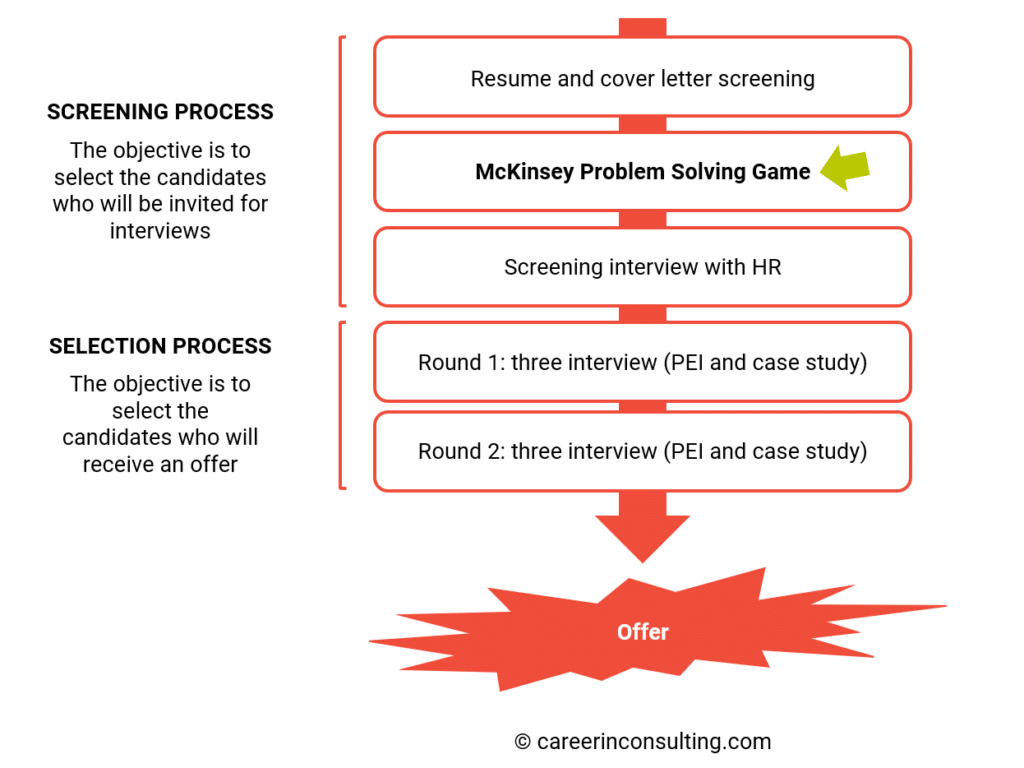
Most of the time, this process takes between two and three months, with often 14 days between steps on average.
Check this article to learn more about the exact preparation and interview timelines you should expect when interviewing at McKinsey.
However, the two rounds of interviews can be planned for two consecutive days.
Show Your Uniqueness: The Resume And Cover Letter Screening
Your resume, with a cover letter, is the first step to a very lucrative job at McKinsey.
Yet, less than 30% of applicants receive a call for an interview.
So, what is McKinsey looking for when screening your resume and cover letter?
First, McKinsey Is Looking For Academic Performance
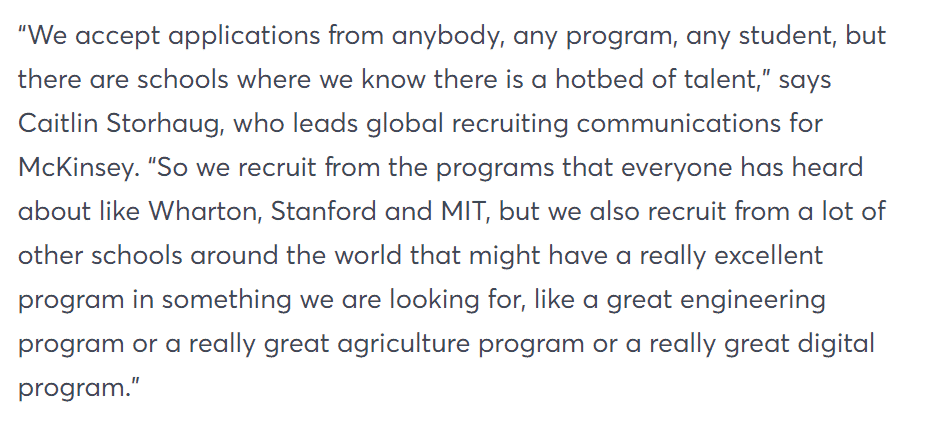
Furthermore, a recent study from poetsandquants.com shows which schools are the top MBA feeders in the consulting industry.
For instance, top MBA programs with good placement in the consulting industry include MIT, London Business School, INSEAD, and Columbia Business School.
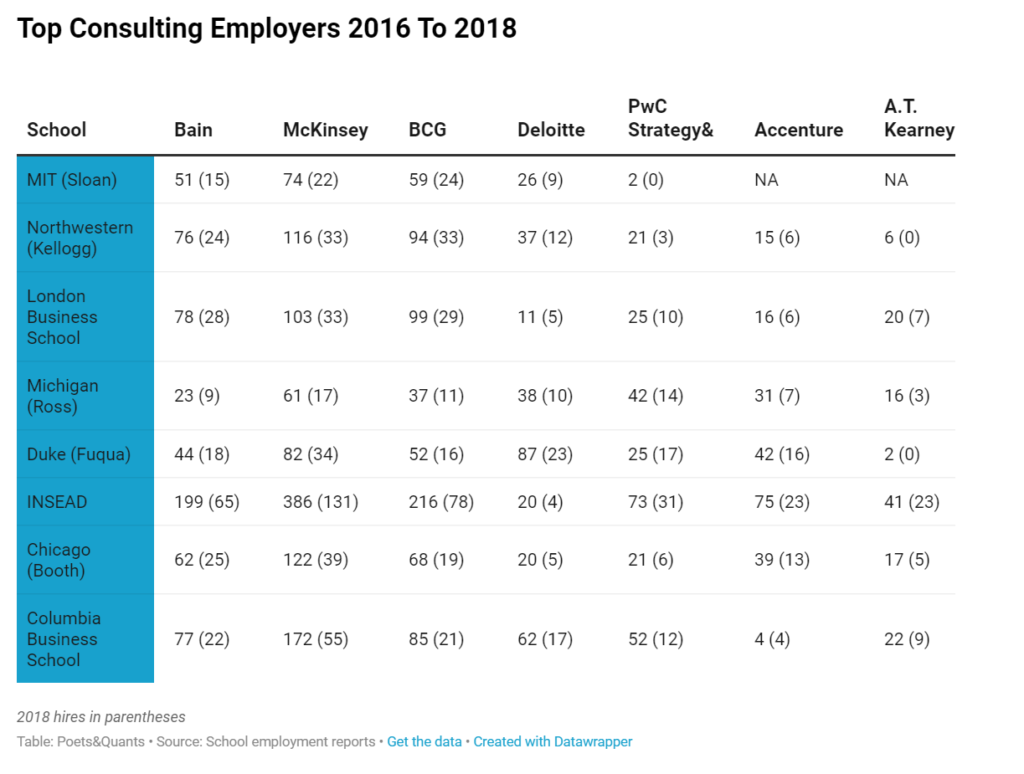
Secondly, McKinsey Is Looking For Specific Qualities
McKinsey & Company is looking for people with certain characteristics and skills.
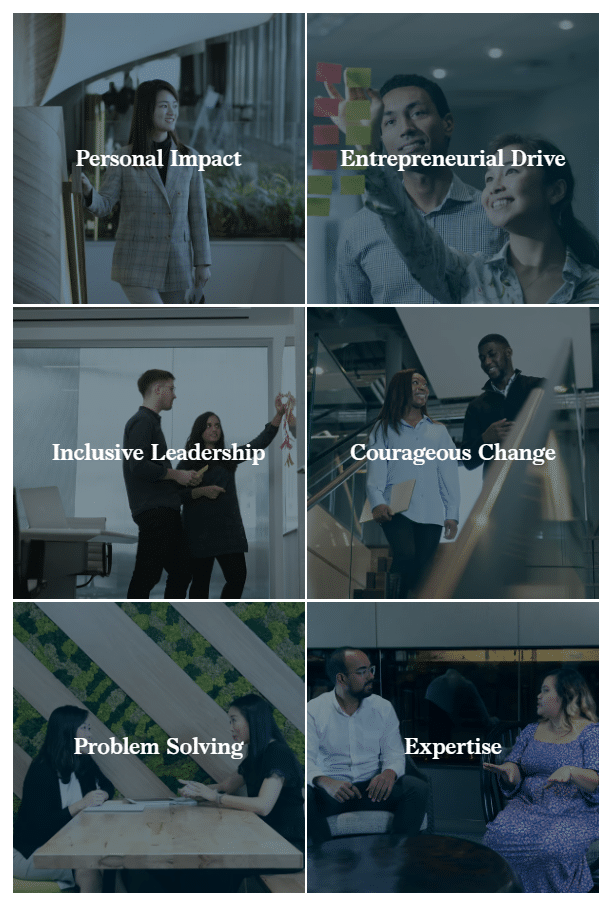
Therefore, all your resume and cover letter content should demonstrate that you possess these skills.
To be more precise: your resume and cover letter content must show how you used these skills and the IMPACT you had.
Lastly, McKinsey Wants To Understand Your Motivation To Join The Firm
McKinsey wants to understand your motivation to join McKinsey:
Are you genuinely interested in joining McKinsey over BCG or Bain?
Thus, your cover letter must show that you have researched the firm, talked to its consultants, and have persuasive and tailored arguments for why McKinsey is your first choice.
Are your cover letter and resume ready for applications?
Check these 2 articles to learn how to write winning resumes and cover letters and get many examples: consulting resume, a step-by-step guide (2023), and writing a persuasive and customized cover letter.
Don't Stress Out: The HR Screening Interview
In most cases, the HR screening interview is conducted by phone and is aimed at briefly reviewing your background.
For instance, the HR screening interview can include a list of questions such as :
Background questions: for example, “Tell me about yourself” or “Describe your work history.”
Motivational questions: “Why are you interested in consulting?” and “Why McKinsey”?
Specific skill-based questions: for example, “Tell me about a time when you had to solve a problem in a team”
For this stage, you can expect a 20-minute interview.
Note: more on how to answer those questions later in this guide.
Show Your Logical Reasoning: The McKinsey Problem-Solving Tests
The McKinsey recruitment process includes a Problem-Solving Test.
Since 2022, McKinsey has used the Imbellus assessment (or McKinsey Problem Solving Game) to replace the McKinsey PST.
Note: The next chapter is about the McKinsey PST, but you can skip it and jump directly to the McKinsey Problem Solving Game.
The McKinsey Problem-Solving Test (PST)
As a Business Analyst at McKinsey, you will spend much time reading and analyzing data (from a graphical chart or an Excel spreadsheet).
Besides, you will have to derive insights from these data and connect these insights to your client’s problem.
The McKinsey Problem-Solving Test (or McKinsey PST) tests your ability to complete these tasks well.
In other words, the McKinsey PST assesses your ability to do the job: if you do well at the McKinsey PST, it indicates that you will perform well as an Analyst.
Indeed, this test has been designed to assess how you use deductive, inductive, and quantitative reasoning abilities to solve problems logically.
How Does The McKinsey PST Look Like?
First, the McKinsey PST is a written test that usually takes 60 minutes and includes 26 multiple-choice questions, with a similar feel to the GMAT and GRE.
Secondly, the 2 most common types of questions you can have are:
- Calculate X, Y, and Z given the following data
- Which of the following conclusions are accurate given the following data
Thirdly, no business background is required. You only need your common sense to answer the McKinsey PST questions.
Lastly, you can’t use a calculator or anything else, just your natural abilities. Math questions are solvable with simple math or approximation.
To conclude, the most challenging part of this test is time management.
You have to answer 26 questions in 1 hour. It is very unlikely that you’ll be able to answer all the questions, and McKinsey doesn’t expect you to do so.
Examples Of McKinsey PST Questions
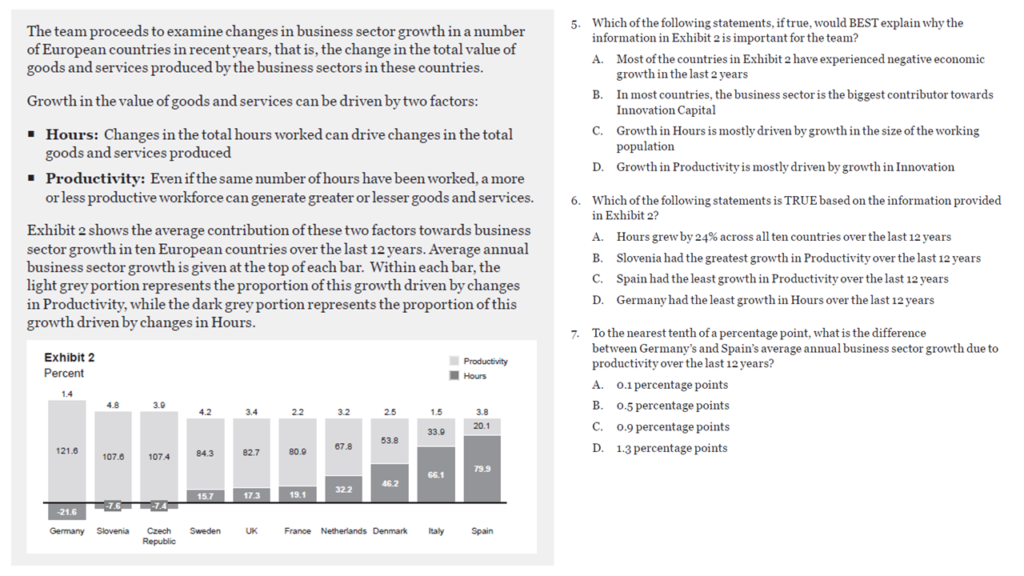
Get 4 Complete Case Interview Courses For Free

You need 4 skills to be successful in all case interviews: Case Structuring, Case Leadership, Case Analytics, and Communication. Join this free training and learn how to ace ANY case questions.
McKinsey Problem Solving Game
The McKinsey Problem Solving Game, also known as the Imbellus Assessment (or Imbellus test), is an environmentally-themed video game using data science to evaluate problem-solving choices.
How Does The McKinsey Problem Solving Game Look Like?
To begin with, this a gamified test divided into 2 games:
- First, you must create a balanced, sustainable ecosystem based on the rules of the environment you choose. For instance, in a mountain scenario, you determine the characteristics of the environment (e.g., elevation, humidity, wind, etc.), and then you choose animals and plants that can survive in this environment
- Secondly, you must defend a plant or an animal from enemies (usually rodents) by using slowers (barriers) or killers (predators). To win this game, you must understand which disease you face, how a disease is spreading, which animals are affected by this disease, etc.
You have 60-75 minutes to complete both games.
Next, the McKinsey Problem Solving Game doesn’t just look at a candidate’s answers and how they get them.
It can see the candidate’s path and the information used to make a decision.
In this way, the video game assessment goes beyond the capabilities of the problem-solving test (PST) currently used in the screening process.
The McKinsey PST lets recruiters only see answers, not how they arrived.
Because the PST is a multiple-choice test, results also have some measure of luck.
To conclude, the game does not require business and mathematical knowledge, only evaluating cognitive abilities and problem-solving preferences.
Update: Check out our new article about the McKinsey Problem Solving Game, detailing the latest trends in the McKinsey PSG.
What McKinsey Says About The Imbellus Test
Do NOT Neglect It: The Personal Experience Interview (PEI)
After the screening process, there is a selection process consisting of multiple interviews.
This section will tell you everything you need about the Personal Experience Interview.
But, before we start, I want to point out a mistake made by too many candidates:
Do NOT neglect your preparation for this part of the interview.
Indeed, the PEI counts for 50% of your assessment. In other words, candidates often fail to secure an offer after falling flat on the PEI – even with perfect case-cracking skills.
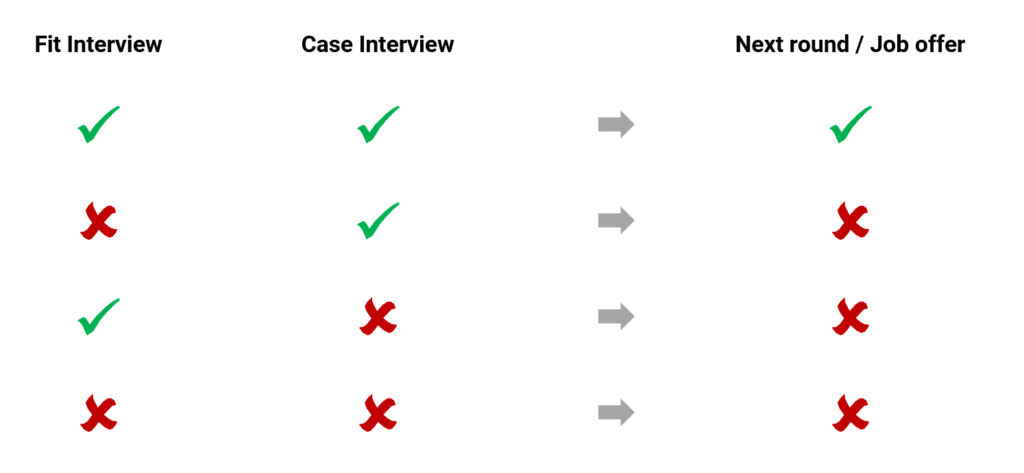
What To Expect During The PEI
During each of your Personal Experience Interviews, you can expect the four following types of questions:
First, “Tell me about yourself” or “Walk me through your resume.”
Then, “Why Consulting?“.
Thirdly, “Why McKinsey?“.
Finally, one of the five McKinsey behavioral interview questions.
You can expect the McKinsey PEI to last between 20 and 40 minutes.
Now, let’s go through these 4 types of questions.
Tell Me About Yourself
You never get a second chance to make a first impression.
This question, or common variants such as “Walk me through your resume,” is an easy and open-ended start to a conversation where your interviewer wants to know the following:
- What are your motivations, and what drives you?
- Which problems you had to solve, and how you solved them?
- What is your academic background?
- How do you deal with people?
- What impact have you had in the past?
Related article: Tell Me About Yourself: How to Answer This Question.
Why Consulting?
A natural question following “Tell me about yourself” is “Why consulting?”.
Because the second most important thing that McKinsey wants to know after who you are is:
- if you understand what Consulting is,
- and if you are truly interested in pursuing a career in that industry.
Why’s that?
Because McKinsey doesn’t want you to leave after six months when you would have realized that the consulting lifestyle doesn’t fit your objectives.
So, whether Consulting is a thoughtful career choice or an “I don’t know what to do, let’s try” career choice, there are many good reasons why Consulting can be a good opportunity.
7 Reasons Why Consulting Can Be A Good Career Opportunity
- #1 - It's a good career choice after University if you don't know what to do: if you don't know what to do after University or after your MBA (you're not alone!), then Consulting is a safe bet. You'll have the opportunity to explore which career, sector or specialty is right for you
- #2 - You'll have a strong impact: you'll have the opportunity to work on and solve the most pressing problems faced by big corporations
- #3 - You'll have a strong exposure to C-level Executives: early on in your career, you'll work directly for CEOs, CFOs, CMOs, etc. and start developing the soft skills to become a senior Executive later
- #4 - You'll learn a lot: Consulting firms invest a lot in training their consultants. In addition, the feedback culture is very strong and you'll get full performance reviews regularly
- #5 - You'll work with bright people: consultancies pride themselves on hiring bright and interesting people. Plus, with 3-month projects on average, you'll meet a lot of different people in consulting
- #6 - You'll have the opportunity to work in an international environment: large consultancies sell work to businesses and governments all around the world
- #7 - You'll have access to an amazing alumni network: having worked in a consulting firm will give you access to its alumni network that will help you throughout your career
2 Other Reasons Why Consulting Can Be A Good Career Opportunity (But You Can't Tell Them To Your Interviewer)
- #8 - You'll have great exit opportunities: headhunting firms or big corporations love ex-consultants. Even now, 5 years after I left Consulting, head hunters still contact me on Linkedin to point out interesting opportunities
- #9 - You'll earn a lot of money: consulting is also known as a very well-paid industry. The average base salary for a McKinsey Associate is $127,000 a year according to Glassdoor. Plus, your salary will increase between 10% and 25% each year
Besides listing a couple of reasons why you want to pursue a career in consulting, a compelling answer should explain WHY these reasons are important for you.
Check this article to learn how to craft a compelling answer to the “Why consulting?” question.
Why McKinsey?
Next, “Why McKinsey?” : This question evaluates your motivation to join McKinsey.
I have explained in this article how to have a compelling answer to this question.
Behavioral Interview Questions
Finally, your interviewers will ask you one of these 5 McKinsey behavioral interview questions:
- Describe a challenging situation when you have had to work hard to achieve something, in a limited time, outside your comfort zone (ENTREPRENEURIAL DRIVE)
- Tell me about a time when you have had to work with someone with an opposing opinion (PERSONAL IMPACT)
- Share an example where you effectively worked with people with different backgrounds (INCLUSIVE LEADERSHIP)
- Revisit a time when you experienced significant change or encountered an ambiguous situation and share the actions you took to adapt to the new circumstances (COURAGEOUS CHANGE)
- Discuss a hypothetical client scenario to help us understand how you structure tough, ambiguous challenges, identify important issues, deal with the implications of facts and data, formulate conclusions and recommendations, and articulate your thoughts (PROBLEM SOLVING)
After your answer, your interviewer will ask several follow-up questions to understand better how you used the skills that McKinsey seeks.
Hence, be prepared to go into detail and explain your options, your decisions (and why), what was difficult, what you enjoyed the most, etc.
Finally, I recommend preparing between 4 and 6 potential stories to ensure every interviewer hears a different story.
Related articles:
- The McKinsey PEI to understand in-depth how to ace your fit interviews
- The STAR framework revisited to craft amazing stories based on your experiences
Be Exceptionally Structured: The Case Interview
The Case Interview Is Another Problem-Solving Test
McKinsey believes the best way to assess your problem-solving skills is to discuss a real client scenario with you.
This helps them understand how you structure tough, ambiguous business challenges, identify important issues, deal with all the implications of facts and data, formulate conclusions and recommendations, and articulate your thoughts in a fast-moving discussion
For instance, you can watch this McKinsey video that outlines what to expect during the case interviews:
Besides what is outlined in the McKinsey video, you can watch what a real interview looks like in the next two videos:
Interviewer Led vs. Candidate Led
The McKinsey-style case interview follows the McKinsey interviewer-led case study interview format.
What does that mean?
First, your interviewer will present a problem. After clarifying questions, you must structure an approach to solve this problem.
Secondly, your interviewer will ask you a set of pre-determined questions, regardless of what your initial structure is.
For instance, here are the types of questions you can have:
- Problem structuring – organize the problem into an issue tree
- Trend analysis – review a graph and synthesize information relevant to the client
- Quantitative analysis – solve a simple mathematical calculation without a calculator and synthesize the results for the client
- Synthesis – the partner or client CEO is in the elevator with you. What do you recommend they do?
See each of these questions like a “mini” case:
You will have to understand the problem, develop a mini structure, ask for additional data (if necessary), and come to a conclusion that answers the question.
Good examples of interviewer-led cases can be found in the sample cases on the McKinsey website.
Furthermore, you can read my free case interview guide.
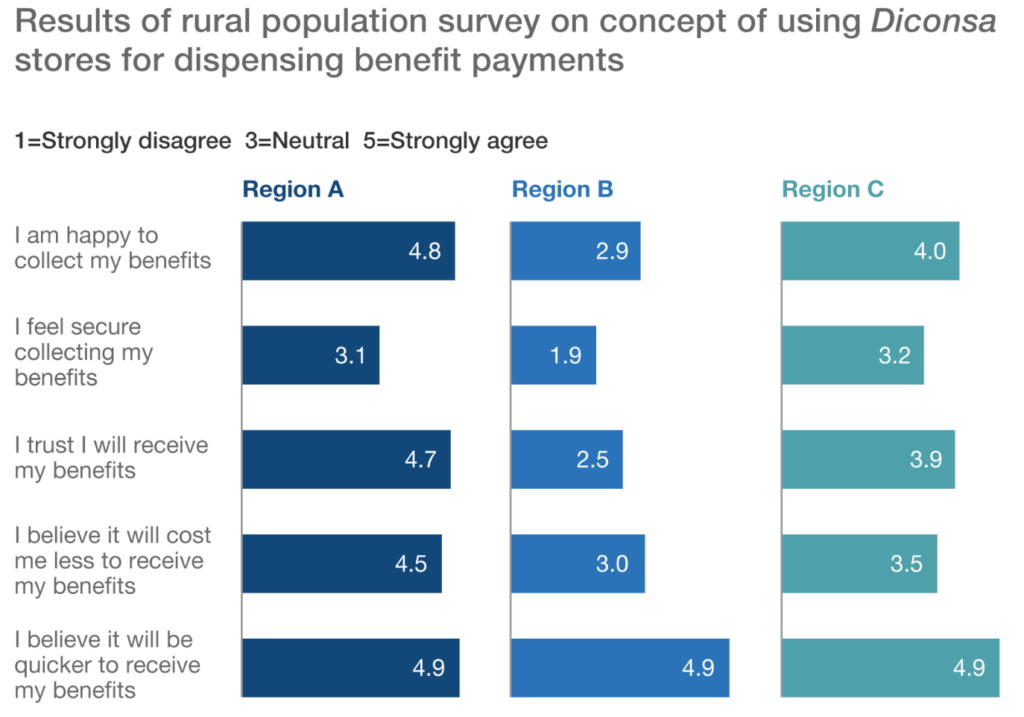
Other consulting firms, such as the Boston Consulting Group or Bain and Company, use candidate-led case study interviews, which require the candidate to lead the discussion toward a final recommendation without a formal question format.
McKinsey Wants You To Succeed
Unlike in many industries, management consulting firms tell you exactly how to interview; the challenge is meeting McKinsey’s level of excellence.
To help you and other candidates meet baseline expectations, McKinsey provides these resources to candidates:
- 45-minute practice case study interview with a McKinsey alumnus
- 2-hour webinars explaining case study interviews with McKinsey alumni
- Four practice case interviews
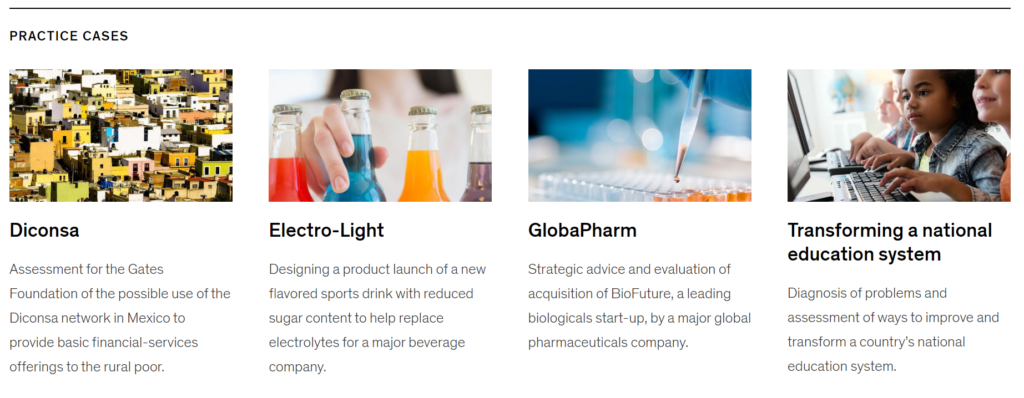
I want you to succeed, too: you can find 250+ practice cases on this page.
Related article: 11 must-know frameworks to ace your case interviews.
You’re Almost Done: Ask the Interviewer Great Questions
You’ve made it through the behavioral and case study portions.
Now, the interviewer asks if you have any questions.
McKinsey & Company is genuinely interested in your questions. Interviewers want to know you are passionate about consulting and working at McKinsey.
Here are some ideas for great questions:
- Make a connection with your interviewer. Ask questions about their background and their current work that interest you
- Explore the culture of the office at which you are interviewing
- Clarify the structure of the office, McKinsey, or client engagements
You can read this article to build your list of smart questions to ask at the end of your interviews.
The Infamous Blacklist: Does It Exist? And How to Overcome It
The jury is out on if there is a McKinsey blacklist.
Here’s what I do know: only apply if you are ready to interview.
Management consulting is a destination job for university programs and experienced hires.
Competition is strong.
For instance, if you do not pass the interviews, consulting firms will request you wait 12-18 months until you reapply.
Even then, McKinsey & Company may want to see a significant career change as evidence your skills have improved to pass another set of interviews, such as through a graduate degree, significant promotion, or work at a top-tier company.
Don’t dwell on the question of the blacklist, but remember, competition is tough. Be confident before you interview.
Offered an interview but not feeling ready? I can help you prepare in as little as 4 weeks.
The McKinsey Recruitment Process: Conclusion
To conclude, you now have a better understanding of the essentials of the McKinsey interview process.
Curious about the recruitment process for other top firms? Read more here:
Now I want to hear from you:
Do you have any questions about the process?
With which part of the process do you struggle the most?
Leave a comment below.
Sébastien
Get 4 Complete Case Interview Courses For Free

You need 4 skills to be successful in all case interviews: Case Structuring, Case Leadership, Case Analytics, and Communication. Join this free training and learn how to ace ANY case questions.
SHARE THIS POST
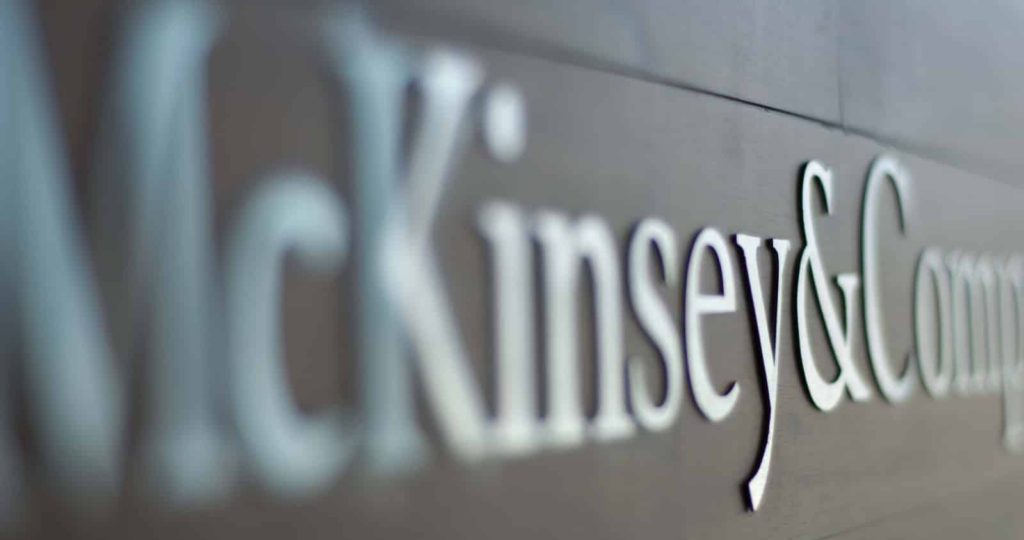
Thanks admin for sharing this informative post.
Pingback: Why Consulting: How To Answer This Question - Career in Consulting
Pingback: How to answer “Why McKinsey?”, “Why BCG?”, or “ Why Bain?” questions - Career in Consulting
Really Helpful, one edit would be the duration of imbellus test is not 2 hours, it’s actually 60-75 mins
Thanks! Did you take the imbellus test? How was it?
really good postss
Thank you
I had given my round 2 interview with a partner and subsequently with a senior partner. What are my chances of getting a call from Mckinsey? Also how long do they generally take to make a decision?
If you haven’t received a response within 10 days, you should contact HR.
Hi, I got an interview for a position of intern but it’s in the field of manufacturing. I have to case interview but no PST or PSG ?.
Will the case interview be same for me or will it be different
Hi. Per my experience, yes you should have to pass a test and the case interviews will be the same as for generalists.
Hi,
I interviewed at McKinsey recently for a Technical Role in Operations Analytics. The interview was my first in the series and was a technical one.
What should I expect future round of interviews to look like, given I will be working as Data Scientist – doing lots of Coding in Python!
Any help and advice is much appreciated.
Thank you in advance.
Hey. How much time would you recommend I take to prepare? Should I start preparing before I submit my resume or after? And which stage do you think I should prepare for most?
Thanks in advance : )
Hi Sonia.
I recommend being ready BEFORE you apply. This is very important because you won’t have the time to prepare after you’ve received the confirmation for your interviews.
Regarding the time you need to be ready? It varies from person to person, but 3-5 months is a good average per my experience (if you prepare without a coach). A (good) coach will help you save a lot of time. for instance, our clients are ready in 4-8 weeks.
Hope this helps,
Sébastien